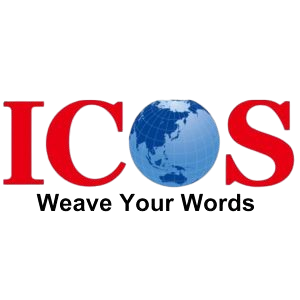How To Write Good Technical Documentation in Multiple Languages that Work Globally

Table of Contents
How to write a good technical documentation in multiple languages?
Let’s imagine you recently purchased a high-end piece of equipment for your company, a cutting-edge printer that will supposedly expedite operations and save you hours of labor each week.
As you open the package, you’re thrilled, but the manual is the only thing preventing you from being as efficient as you could be.
Technical language, illogical pictures, and directions that make you question whether you ever set up the equipment correctly appear throughout it. Imagine now that this same handbook has been inadequately translated into many different languages, with inconsistent and ambiguous instructions in each edition.
Isn’t the frustration doubled?
This is the exact scenario many companies and their global customers face when technical documentation isn’t written and translated effectively. We all know that precise technical documentation is crucial for products or services that involve complex operations, but what happens when you’re dealing with multiple languages?
How do you ensure that the clarity and technical accuracy you need in English, for example, are just as clear in French, Japanese, or German?
But it’s not as simple as just translating word-for-word. Poorly localized technical content can lead to costly misunderstandings, product misuse and even damage to your brand reputation.
Whether it’s the wrong term being used for a critical part, or cultural differences affecting how the instructions are received, the risk is real.
Take the case of a software company expanding into new markets. The technical documentation for their product—an advanced cybersecurity tool—was translated without proper attention to industry-specific terms.
The result? Users in those new regions struggled to follow basic setup instructions, causing delays, unnecessary support tickets, and even loss of sales.
So, how do you avoid this?
How to write a good technical documentation that is not only accurate but works seamlessly across different languages?
The answer lies in a blend of careful writing, understanding your audience, and choosing the right translation strategies.
Let’s break down the steps.
How to Be Multilingual (in Technical Documentation)

What’s the secret to writing multilingual technical documentation that actually works?
Let’s start with the basics—what does multilingual documentation really mean? It’s not just about translating content word-for-word.
It’s about ensuring the accuracy, consistency, and clarity of your technical information across multiple languages. Think about it like this: if the original document is a well-engineered machine, the multilingual version needs to function just as smoothly, no matter what language your user speaks.
When companies create multilingual documentation, their goals are straightforward:
- Accuracy: The technical details must remain precise across every language. A small misstep in wording could lead to major errors.
- Consistency: Terminology, formatting, and instructions must stay consistent to avoid confusion.
- Faster Time-to-Market: Efficient, clear documentation speeds up product rollouts, reducing delays caused by misunderstandings.
Businesses seek these outcomes because they drive productivity and ensure a smoother user experience. After all, if your documentation confuses people, they’ll spend more time on customer support than actually using your product. In a world that’s becoming increasingly interconnected, being multilingual with technical documentation isn’t just a good idea—it’s a necessity.
Why Accurate Technical Documentation Matters Globally
Let’s get one thing straight, in the technical world, accuracy is everything. Imagine a machine operator trying to follow instructions that were mistranslated from English to Japanese. What happens if a simple error in translation tells them to press the wrong button?
Suddenly, you’re facing costly delays, safety hazards, or even a complete halt in production.
This is why accurate technical documentation is critical for businesses operating across borders. When documentation is unclear or inconsistent, it leads to miscommunication, which can have a ripple effect. Whether it’s assembly instructions for machinery or setup guides for software, the smallest inconsistency can cause major headaches for global users.
And it’s not just about getting the words right—it’s about creating a seamless (but not seamless) experience that feels natural in every language. If your manual reads like it was slapped together by a machine, users will notice. What you need is documentation that speaks fluently, not only in English but in every language your audience uses. Otherwise, you risk alienating entire markets.
Technical Documentation Best Practices
Writing good technical documentation isn’t just about translating content; it’s about following best practices that ensure clarity, consistency, and accuracy from the start. Let us break this down into a few key steps:
- Clarity: Always assume your audience knows less than you think. Make things as clear and simple as you can.
- Consistency: Establish a style guide from the beginning. This will help translators and writers keep terminology and formatting aligned across languages.
- Accuracy: Technical information can be complex, so it’s essential to double-check that every term and instruction is correct.
Glossary and Style Guide
Creating a glossary and style guide is essential for maintaining consistency. A glossary defines key terms in every language, making sure everyone is on the same page—literally. A style guide, meanwhile, sets the tone and structure for your documentation, so every piece feels cohesive, no matter who’s reading it or what language it’s in.
Use of Specialized Translators
When it comes to technical content, you can’t rely on general translators. Specialized translators—those with expertise in your industry—are invaluable. They understand not just the language, but the technical nuances of your product or service, ensuring that nothing gets lost in translation.
Translation Quality Control
Even the best translators make mistakes, which is why quality control is vital. A proper review process should include proofreading by native speakers, automated checks for consistency, and manual reviews to catch any errors that machines might miss.
Overcoming Common Problems in Multilingual Technical Documentation
Let’s face it, creating multilingual technical documentation is not a small task. Companies often run into several common problems:
- Inconsistent Terminology: Without a clear glossary, translators may use different terms for the same concept across various languages.
- Delays: The translation process can be slow, especially without a proper workflow in place.
- Cultural Barriers: Some instructions might make perfect sense in one culture but be completely baffling in another.
But the good news is that you can overcome these challenges. The three secrets are:
- Expert Translators: Using specialists who understand both the language and the industry can drastically improve accuracy.
- Glossaries: A well-developed glossary keeps terminology consistent across languages.
- Translation Management Tools: Tools like content management systems and glossary checkers streamline the translation process, speeding up time-to-market while maintaining consistency.
Technical Documentation Tools
Technology can be your greatest ally when it comes to multilingual documentation. Here are some tools that can streamline the process:
- Automated Translation Platforms: These tools can speed up the translation process, though they still require human oversight to ensure accuracy.
- Content Management Systems (CMS): A good CMS allows you to manage and update multilingual content efficiently.
- Glossary and Consistency Check Tools: These help ensure that key terms and styles are applied consistently across all languages.
By using the right tools and following the best practices we’ve outlined, you’ll be well on your way to creating multilingual technical documentation that works—globally.
Step-by-Step: How a Translation Company Can Help You

Overcoming the complexities of multilingual technical documentation is not that tough though. With the right strategy, a translation company can streamline the process for your business.
Let’s break it down into six actionable steps that any translation service should offer:
- It will conduct a Needs Analysis
First thing to do is to understand the scope of your project. This includes identifying the languages needed, the complexity of the technical material, and any regional-specific requirements. A solid needs analysis will ensure the translation process addresses all your unique challenges right from the start. - Create a Glossary of Terms
Before diving into translation, the company will create a glossary of terms. This ensures consistent use of technical language across all documents and maintains uniformity. A well-constructed glossary prevents common terminology mishaps. - Set Up a Style Guide
It will set a style guide that sets the tone, formatting, and structural rules for your documentation. This will ensure that your content looks consistent in different languages. It’s a blueprint for global communication, ensuring everything from tone to punctuation is standardized. - Will Assign Expert Translators
Not just any translator will do. The company will assign expert translators who are familiar with your industry. For instance, if you’re in the tech sector, they will make sure that translators with a background in technology are assigned to your project to ensure the accurate translation of complex concepts and jargon. - Will Implement a Quality Assurance Process
Translation is just one part of the puzzle. The company will conduct a thorough quality assurance (QA) process to catch inconsistencies, errors, or cultural inaccuracies. This step often involves multiple rounds of reviews and edits by native-speaking proofreaders. - An Offer for Continuous Support Documentation isn’t a one-time thing. It evolves as your product or service changes. This support ensures that updates, revisions, or new documents are translated promptly, maintaining consistency and accuracy across the board.
Free Technical Documentation Template Word & Example
Providing a free technical documentation template can be a game-changer for teams looking to standardize their technical content.
Here is one for you:
1. Title Page
2. Table of ContentsUsing Word’s built-in heading styles, you can automatically generate a table of contents to make navigation simple for users. 3. Product InformationProvide a brief overview of the product and its purpose. Use this section to highlight key features and benefits.
4. User GuideThis section can house multiple subsections depending on the depth of your user instructions.
5. Technical DetailsDive deeper into the technical specifications of the product.
6. Glossary of TermsCreate a glossary that explains technical jargon, acronyms, and specialized terms used within the document. This section ensures that even less technical readers can follow along. 7. AppendicesUse appendices to include additional information that can enhance the user’s understanding of the product. Examples:
8. Process Documentation (Optional)For more complex systems or products, include process documentation.
|
This structure allows for clarity, ensuring your documentation is easy to navigate in any language.
FAQs About Multilingual Technical Documentation
Yes, multilingual documentation ensures consistency across global markets, improves user experience, and helps meet local regulatory requirements.
A technical design document should outline the architecture, design decisions, and technical specifications. Structure it with clear headings for each section: introduction, objectives, system design, and implementation details.
Your conclusion should summarize the key points of the document, offer final recommendations, or provide a next step for users, whether it’s installing a product or taking further action.
Microsoft Word offers tools like built-in heading styles, bullet points, and review features that make it easy to format and structure a professional document. Using templates can also save time and ensure consistency.
When writing a technical specifications document for a website, outline the site’s functionality, user interface design, backend requirements, and any technical constraints. Be clear, concise, and organized with each section.
Signing Off:

Creating multilingual technical documentation is no longer just an option—it’s a business imperative. It plays a vital role in delivering accurate, consistent information that caters to global users.
Following best practices such as developing a glossary, setting up a style guide, using expert translators, and ensuring quality control can save you from costly errors and ensure a seamless (but not seamless) user experience.
Ready to take your technical documentation global?
Partnering with a specialized translation service can help you break language barriers and improve the global reach of your business. Don’t let miscommunication slow you down—invest in the right multilingual strategy today!
Book your free consultation now!

